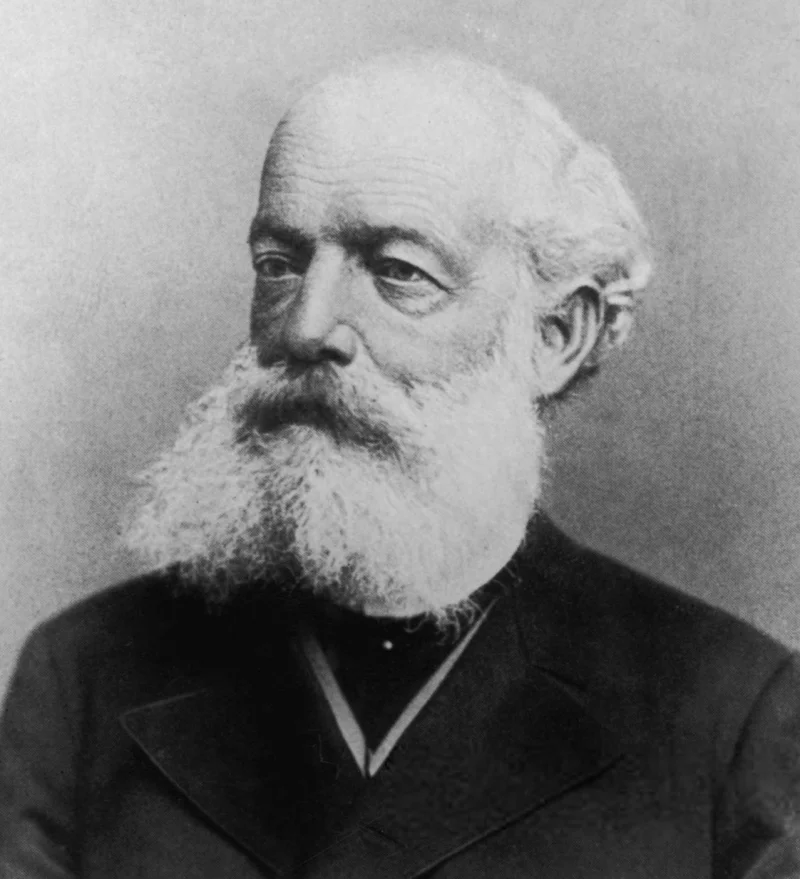Short Summary
Friedrich August Kekulé was a renowned German chemist known for his groundbreaking work in organic chemistry. He is most famous for his proposal of the structure of the benzene molecule, a significant advancement that shaped modern chemical theory. Kekulé's contributions to the understanding of molecular structures and bonding fundamentally altered the course of chemical research. His work laid the foundation for the development of aromatic chemistry, which has had lasting impacts on various scientific fields and industries.
Early Life & Education
Born on September 7, 1829, in Darmstadt, Germany, Kekulé was raised in a family that valued education. His early education took place in Darmstadt, followed by advanced studies at the University of Giessen, where he initially pursued architecture. However, his interest shifted towards chemistry under the influence of Justus von Liebig, a prominent chemist. Kekulé continued his studies in Paris and Switzerland, gaining exposure to the burgeoning field of organic chemistry. His thorough education and diverse experiences laid the groundwork for his future contributions to chemical science.
Career Highlights
After completing his education, Kekulé began his academic career as a lecturer at the University of Heidelberg. His research focused on the structural theory of organic chemistry, which led to his most significant contribution—the structural representation of benzene. In 1867, he was appointed as a professor at the University of Bonn, where he continued his pioneering work in chemistry. Kekulé's career was marked by his ability to synthesize both theoretical and practical aspects of chemistry, allowing him to influence generations of chemists through his teachings and publications.
Major Achievements
- Proposed the ring structure of benzene, revolutionizing the understanding of aromatic compounds.
- Developed the theory of chemical structure, laying the groundwork for structural organic chemistry.
- Contributed to the establishment of the structural formula concept, enhancing the visualization of molecular architecture.
- Published influential textbooks that disseminated his chemical theories widely.
Famous Quotes
- "Let us learn to dream, gentleman, and then we may perhaps find the truth."
- "The history of science is not a mere chronological sequence of discoveries."
Interesting Facts
- Kekulé reportedly conceived the ring structure of benzene through a dream of a snake seizing its own tail.
- He was initially trained as an architect before switching to chemistry.
- Kekulé's work on benzene influenced the development of dyes and pharmaceuticals.
- He was a member of the German Chemical Society, contributing significantly to its formation.
Legacy / Influence
Kekulé's introduction of the benzene ring structure significantly advanced the field of organic chemistry and influenced subsequent research in molecular structures. His work on chemical bonding and molecular architecture has been instrumental in various applications, including pharmaceuticals, materials science, and industrial chemistry. Kekulé's legacy endures in the foundational principles of chemical education and research methodologies.
FAQ
Q: Why is Friedrich August Kekulé famous?
A: Because of his proposal of the benzene ring structure, which revolutionized organic chemistry.
Q: What was Kekulé's major contribution to chemistry?
A: He developed the concept of chemical structures, particularly the structure of benzene.
Q: Did Kekulé have any formal training in chemistry initially?
A: No, he initially studied architecture before switching to chemistry.











